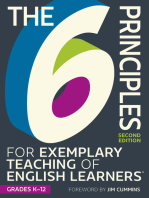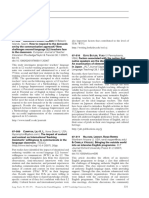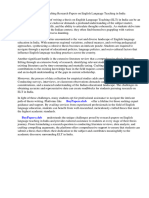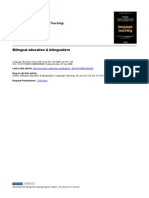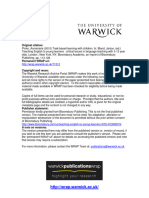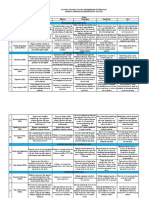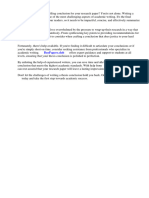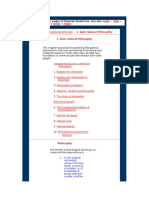0 ratings0% found this document useful (0 votes)
6 viewsUAS - Sociolinguistics SAMID SARIPI
UAS - Sociolinguistics SAMID SARIPI
Uploaded by
samid saripiCopyright:
© All Rights Reserved
Available Formats
Download as PDF, TXT or read online from Scribd
UAS - Sociolinguistics SAMID SARIPI
UAS - Sociolinguistics SAMID SARIPI
Uploaded by
samid saripi0 ratings0% found this document useful (0 votes)
6 views3 pagesOriginal Title
UAS.sociolinguistics SAMID SARIPI
Copyright
© © All Rights Reserved
Available Formats
PDF, TXT or read online from Scribd
Share this document
Did you find this document useful?
Is this content inappropriate?
Copyright:
© All Rights Reserved
Available Formats
Download as PDF, TXT or read online from Scribd
Download as pdf or txt
0 ratings0% found this document useful (0 votes)
6 views3 pagesUAS - Sociolinguistics SAMID SARIPI
UAS - Sociolinguistics SAMID SARIPI
Uploaded by
samid saripiCopyright:
© All Rights Reserved
Available Formats
Download as PDF, TXT or read online from Scribd
Download as pdf or txt
You are on page 1of 3
Document #: 03 UAS
FORM SHEET Rev #: 03
Number of Page: 2
TAKE HOME UAS (FINAL TEST) Issues on :
20-01-2024
Course : Sociolinguistics and Language Teaching
SEMESTER :1
Name : Samid Saripi
https://journal.unilak.ac.id/index.php/elsya/article/view/2538/1629
Sociolinguistic Influence in the Use of English as a Second Language (ESL) Classroom:
Seeing from OGO’s Perspective
Answers:
1. To answer this instruction, you need to consider these following questions:
A. What is the author trying to achieve with this text? (Mention on
what page(s), which paragraphs that you find the answer).
the failure of a student in English between high school students is not
due to gender, age, religion, age or anything, but because these failures
occur because of other factors such as 'parents of students' in terms
of work and their socio-economic background. Therefore, it is very
important for all parents to help their environment by providing
learning materials, time and other resources that can help their
children's language skills in learning English. Page 31 Paragraph 9
B. What is the main purpose of the article? (Mention on what page(s),
which paragraphs that you find the answer)
This review-based study aims to obtain data on the most significant effects
of the five hypotheses in Nigeria. This article also tries to see the
strengths and weaknesses of the research with the aim of contributing
ideas to academia. The findings of this study will also provide an
overview of whether the article "Sociolinguistics Inputs and English as
Second Language Classrooms" published by Canadian Center of
Science and Education written by Ofodu Graceful Onovughe can be
replicated in the same field or merely as a reference reading in the field
sociolinguistics. Page 30 Paragraph 3
C. Who is the intended audience?
- 240 high school students selected from 6 schools randomly
D. How does the language and content reflect this audience.
(Identify the language by finding the sentences/paragraph that reflect
to the audience).
- OGO‘s hook‘is his smooth delivery of ideas to the audience. OGU
mentioned that his study was conducted ―to claim the influence
of sociolinguist, which had the most significant influence in the use
of English as a second language in the classroom with several
hypotheses, namely the work of parents, gender, students' social
class, ages, and religion‖ which this study sees as its main purpose in
his article. Page 29 Paragraph 10
2. Identify the main ideas and arguments.
Determine the main ideas and arguments presented in the text. Look for explicit
statements of the main point or thesis, as well as supporting ideas and evidence.
Analyze how the author develops and presents these ideas throughout the text.
To answer this instruction, you need to consider these following
questions:
a. What are the main ideas presented in the article? Is there a clear
thesis statement?
- That's why English has become a language that determines student
progress that can be done to obtain higher education and prestigious
work. Therefore English has the advantage of all languages in the
country this present study believe his main message that can be
found in the article. Page 29 Paragraph 2
b. How does the author develop and support these ideas throughout the
article?
- The sociolinguistic background of a child influences the use of
children's language in their daily lives—likewise, children's
understanding of English in the classroom and the school
environment. Page 29 Paragraph 4
c. What evidence or examples are provided?
- For example, a child from a high social class whose parents often
use English to interact does not have a problem in using English as
a second language in the classroomcompared to children from
low social classes whose parents are rarely or never using English
in interacting makes using English as a second language in the classroom
the biggest problem for the child, because the child has never or
rarely heard the foreign language in his family environment. Page
29 Paragraph 4
3. Evaluate the evidence.
Assess the evidence presented in the text to support the main ideas and
arguments. Analyze whether the evidence is based on credible sources, logical
reasoning, or empirical data.
To answer this instruction, you need to consider these following questions:
a. What types of evidence does the author use to support their arguments?
find out whether they are based on research, experiment, or theoretical
analysis.
- This article review uses a qualitative approach to explain
articles entitled "Sociolinguistics Inputs and English as Second
Language Classrooms" Published by Canadian Center of Science
and Education which consists of 7 pages and is reinforced with
26 references in Vol. 5 No. 8; 2012 in Journal of English Language
Teaching. Page 30 Paragraph 1
b. Are the evidences reliable? (Elaborate your reason).
- Evidence that can use 5 hypotheses, namely parents' occupation,
gender, and social class of students, age, and religion and by taking a
sample of 240 students who were randomly selected from several
schools.
c. If there any evidence relevant to the argument?
- The findings revealed that parents‘ occupation is asignificant
sociolinguistic influenceon the use of English among middle school
students, followed by gender, age, religion, and classes. This current
paper evaluated how OGO‘s research is represented in his article.
Results reveal the strengeths, weaknesses, and the flaws of the article.
4. Do you find any limitations or biases to be considered? (Mention on what
page(s), which paragraphs provide that limitations).
- This review-based study aims to obtain data on the most significant
effects of the five hypotheses in Nigeria. This article also tries to
see the strengths and weaknesses of the research with the aim of
contributing ideas to academia. The findings of this study will also
provide an overview of whether the article "Sociolinguistics Inputs
and English as Second Language Classrooms" published by
Canadian Center of Science and Education written by Ofodu Graceful
Onovughe can be replicated in the same field or merely as a reference
reading in the field sociolinguistics. Page 30 Paragraph 2
You might also like
- The 6 Principles for Exemplary Teaching of English Learners: Grades K-12, First EditionFrom EverandThe 6 Principles for Exemplary Teaching of English Learners: Grades K-12, First EditionNo ratings yet
- Study Guide: Logic and Contemporary RhetoricDocument114 pagesStudy Guide: Logic and Contemporary RhetoricgghhsdNo ratings yet
- LANGUAGE RESEARCH CHAPTER 1-5 OriginalDocument52 pagesLANGUAGE RESEARCH CHAPTER 1-5 OriginalLerryNo ratings yet
- CREED Argument WritingDocument9 pagesCREED Argument WritingBrianna RobertsNo ratings yet
- ICAS EnglishAFDocument1 pageICAS EnglishAFPork JunNo ratings yet
- Research Paper in English Language TeachingDocument7 pagesResearch Paper in English Language Teachinghgrmzbikf100% (1)
- Shakhlo's ThesisDocument66 pagesShakhlo's Thesismaftunjon bakhtiyorovaNo ratings yet
- Research Paper On Language TeachingDocument4 pagesResearch Paper On Language Teachingfemeowplg100% (1)
- The Strengths and Weaknesses of The Written EnglisDocument10 pagesThe Strengths and Weaknesses of The Written Englisshaney ONealNo ratings yet
- English Language Learners: Developing Literacy in Second-Language Learners-Report of The National Literacy Panel On Language-Minority Children and YouthDocument21 pagesEnglish Language Learners: Developing Literacy in Second-Language Learners-Report of The National Literacy Panel On Language-Minority Children and YouthLedi Wakha WakhaNo ratings yet
- Task 2 Work Collaborative Group - 518016 - 19Document7 pagesTask 2 Work Collaborative Group - 518016 - 19Isaac MendozaNo ratings yet
- The 6 Principles for Exemplary Teaching of English Learners: Grades K-12, Second EditionFrom EverandThe 6 Principles for Exemplary Teaching of English Learners: Grades K-12, Second EditionRating: 5 out of 5 stars5/5 (1)
- ENG503 Our Finals CompilationDocument26 pagesENG503 Our Finals Compilationahsanafifa42No ratings yet
- REASEARCH PAPER FinalDocument35 pagesREASEARCH PAPER FinalDayondon, AprilNo ratings yet
- Research Paper of Grade 12 AdolphusDocument20 pagesResearch Paper of Grade 12 AdolphusGeorge Vincent SismarNo ratings yet
- Part 1Document7 pagesPart 1haivnreal2No ratings yet
- Literature Review On Mother Tongue InterferenceDocument4 pagesLiterature Review On Mother Tongue Interferencec5p9zbep100% (1)
- Language Acquisition Literature ReviewDocument13 pagesLanguage Acquisition Literature Reviewaflsodoam100% (1)
- Language TeachingDocument8 pagesLanguage Teachingqi liuNo ratings yet
- 4229 16783 2 PBDocument11 pages4229 16783 2 PB21. PHAN NGUYỄN DIỄM QUỲNHNo ratings yet
- Speak Up or Shut Up: A Case Study On Language Anxiety in Conversational English Among Public Senior High School LearnersDocument9 pagesSpeak Up or Shut Up: A Case Study On Language Anxiety in Conversational English Among Public Senior High School LearnersAJHSSR JournalNo ratings yet
- Sla Tesol SyllabusDocument12 pagesSla Tesol SyllabuskkumbonaldaNo ratings yet
- Teaching Chinese As A Second Language The Way of TDocument38 pagesTeaching Chinese As A Second Language The Way of TОксана КудиноваNo ratings yet
- Jesoc16 022Document9 pagesJesoc16 022Jhade ManatigaNo ratings yet
- Challengesof Teaching Englishin IndiaDocument18 pagesChallengesof Teaching Englishin Indiatusarkantas47No ratings yet
- Acknowledgement: Inhibitions of English Language University StudentDocument39 pagesAcknowledgement: Inhibitions of English Language University StudentAli Asgher ParekhNo ratings yet
- Introd. Al Ingles Con Fines Académicos - Booklet 2022Document81 pagesIntrod. Al Ingles Con Fines Académicos - Booklet 2022Carolina Fernanda FontanabuonaNo ratings yet
- Research Papers On English Language Teaching in IndiaDocument7 pagesResearch Papers On English Language Teaching in Indiagw1357jxNo ratings yet
- Reading ReflectionDocument7 pagesReading ReflectionZulkifli MydeenNo ratings yet
- Bilingualism Dissertation TopicsDocument7 pagesBilingualism Dissertation TopicsPaperWritingHelpOnlineReno100% (1)
- Eapp Module WK1 3Document6 pagesEapp Module WK1 3Alexandra MariNo ratings yet
- Thesis Language TeachingDocument8 pagesThesis Language Teachingchelseaporterpittsburgh100% (2)
- Chapter I ResearchDocument20 pagesChapter I ResearchIrenelle OdtojanNo ratings yet
- ISLLAC: Journal of Intensive Studies On Language, Literature, Art, and Culture Volume 5 Issue 1, 2021 Journal HomepageDocument10 pagesISLLAC: Journal of Intensive Studies On Language, Literature, Art, and Culture Volume 5 Issue 1, 2021 Journal HomepageDjakaridja Adama diarraNo ratings yet
- Bilingual Education & BilingualismDocument49 pagesBilingual Education & BilingualismRenata JurevičiūtėNo ratings yet
- Exploring English Language AnxietyDocument19 pagesExploring English Language AnxietyPrimo AngeloNo ratings yet
- Anniversary Article Classroom SLA Research and SecDocument33 pagesAnniversary Article Classroom SLA Research and SecRenata RochaNo ratings yet
- BookReview HowLanguagesareLearned795028-1290829Document4 pagesBookReview HowLanguagesareLearned795028-1290829SanaaNo ratings yet
- Chap 6 Task Based Learning For Children Revised - Lessons 6-7Document20 pagesChap 6 Task Based Learning For Children Revised - Lessons 6-7Guada RamosNo ratings yet
- Attidude of Grade 10 Students Toward English Language LearningDocument10 pagesAttidude of Grade 10 Students Toward English Language Learningrod.penales25No ratings yet
- Research Paper Over BilingualismDocument4 pagesResearch Paper Over Bilingualismafeebjrsd100% (1)
- Who To Argue With: Japanese EFL Students' Preference For Student-Teacher or Student-Student Debate FormatDocument10 pagesWho To Argue With: Japanese EFL Students' Preference For Student-Teacher or Student-Student Debate FormatMnira Al-hdaryNo ratings yet
- The Cambridge Guide To Pedagogy and Practice in Second Language TeachingDocument4 pagesThe Cambridge Guide To Pedagogy and Practice in Second Language TeachingJessica GomesNo ratings yet
- English For Academic Purposes: January 2017Document33 pagesEnglish For Academic Purposes: January 2017Cey BarrackNo ratings yet
- Tugas Tutorial 3 - SociolinguisticsDocument3 pagesTugas Tutorial 3 - SociolinguisticsAnne Nailul A100% (1)
- Focus On Form ThesisDocument5 pagesFocus On Form Thesisqpftgehig100% (1)
- Comparing Reading Research To Program Design An Examination of Teachers College Units of Study FinalDocument64 pagesComparing Reading Research To Program Design An Examination of Teachers College Units of Study Finalapi-87128498No ratings yet
- Eapp 110 ModuleDocument47 pagesEapp 110 ModuleKyori NishikataNo ratings yet
- Xiang ChangshuiDocument33 pagesXiang ChangshuiJames KarterNo ratings yet
- The Role of Pragmatics in Second Language Teaching PDFDocument63 pagesThe Role of Pragmatics in Second Language Teaching PDFAndreaMaeBaltazarNo ratings yet
- Error Correction in SLADocument8 pagesError Correction in SLAdarkkitten76No ratings yet
- Action ResearchDocument5 pagesAction ResearchJonalyn MonaresNo ratings yet
- How To Teach The Compulsory Essay HandoutDocument13 pagesHow To Teach The Compulsory Essay HandoutSilvina CarrilloNo ratings yet
- CoffinDocument84 pagesCoffinPrakash SuhagiyaNo ratings yet
- Action ResearchDocument86 pagesAction Researchani ni musNo ratings yet
- 1Document5 pages1bichngoctrann2No ratings yet
- Chapter 3 SupplementaryDocument42 pagesChapter 3 SupplementarytzuyNo ratings yet
- Language Attitude Literature ReviewDocument8 pagesLanguage Attitude Literature Reviewea6mkqw2100% (1)
- Pecha Kucha Planner PDFDocument4 pagesPecha Kucha Planner PDFDavid Villacres100% (1)
- Oral Communication Difficulties of Undergraduate StudentsDocument30 pagesOral Communication Difficulties of Undergraduate StudentsJanna R. PahayahayNo ratings yet
- Lindsay Miller - Academic Listening in A Second Language Context - An Asian PerspectiveDocument12 pagesLindsay Miller - Academic Listening in A Second Language Context - An Asian PerspectiveSamet Erişkin (samterk)No ratings yet
- A Textbook Analysis of " Let's Talk in EnglishDocument28 pagesA Textbook Analysis of " Let's Talk in Englishhamidmostafa833No ratings yet
- 2017 Duff (2017)Document11 pages2017 Duff (2017)Yu HeNo ratings yet
- Tibor R. Machan-A Primer On Ethics (1997)Document201 pagesTibor R. Machan-A Primer On Ethics (1997)morgan385No ratings yet
- Rubric PresentationDocument2 pagesRubric PresentationNur DiniNo ratings yet
- Week 6 Day 1Document18 pagesWeek 6 Day 1VILZENDRICK TORRESNo ratings yet
- Olberding - Other People DieDocument19 pagesOlberding - Other People DiefelmmandoNo ratings yet
- Argumentative WritingDocument31 pagesArgumentative WritingChello Ann AsuncionNo ratings yet
- Eng 149 Day 21-23 PDFDocument25 pagesEng 149 Day 21-23 PDFJillian LaluanNo ratings yet
- Ge-110: Ma/Is: Midterm Quiz No. 1: EmailDocument35 pagesGe-110: Ma/Is: Midterm Quiz No. 1: EmailRachelleNo ratings yet
- Philosophy Now February March 2023Document68 pagesPhilosophy Now February March 2023zhang yan100% (1)
- Considerations in Arguments or OpinionsDocument11 pagesConsiderations in Arguments or OpinionsPia GNo ratings yet
- Writing The Leq (Long Essay Question) : AP World History - Mr. SakoleDocument19 pagesWriting The Leq (Long Essay Question) : AP World History - Mr. SakoleAPCommentatorNo ratings yet
- Noà Carroll Mystifying Movies Fads & Fallacies in Contemporary Film Theory-Columbia University Press (1988)Document272 pagesNoà Carroll Mystifying Movies Fads & Fallacies in Contemporary Film Theory-Columbia University Press (1988)Diana MariaNo ratings yet
- ST2 EnglishDocument4 pagesST2 EnglishLenette AlagonNo ratings yet
- Full DM Notes For 3rd Sem StudentsDocument281 pagesFull DM Notes For 3rd Sem StudentsShambhavi MishraNo ratings yet
- Examples of Conclusion in Research PaperDocument5 pagesExamples of Conclusion in Research PaperrsbptyplgNo ratings yet
- Team 1 - Persuasive Essay OutlineDocument3 pagesTeam 1 - Persuasive Essay Outlineb1021221077No ratings yet
- A. Premise Vs Conclusion NotesDocument8 pagesA. Premise Vs Conclusion NotesEmma PreciousNo ratings yet
- Mathematics For Information Technology 1st Edition Basta DeLong Basta Test BankDocument5 pagesMathematics For Information Technology 1st Edition Basta DeLong Basta Test Bankearl100% (36)
- 1Document150 pages1SonamJunejaNo ratings yet
- Periodical Test (3 Quarter) : Pagbasa at Pasusuri Tungo Sa Pananaliksik 11 I. TEST I. Multiple ChoiceDocument2 pagesPeriodical Test (3 Quarter) : Pagbasa at Pasusuri Tungo Sa Pananaliksik 11 I. TEST I. Multiple ChoicehanniemaelimonNo ratings yet
- Unit I:: Reading and Thinking StrategiesDocument49 pagesUnit I:: Reading and Thinking StrategiesAreanne AlbarilloNo ratings yet
- Epistemology Lecture NotesDocument19 pagesEpistemology Lecture NotesAshleigh SchumanNo ratings yet
- Welcome To The Pages of Maarten Maartensz. See Also: + + + + + +Document52 pagesWelcome To The Pages of Maarten Maartensz. See Also: + + + + + +conditioned_genesis1504No ratings yet
- Handout - Argument Analysis Rogerian and Toulim StructuresDocument4 pagesHandout - Argument Analysis Rogerian and Toulim Structuresapi-210748177No ratings yet
- VIẾT ĐOẠN VĂN ARGUMENTSDocument7 pagesVIẾT ĐOẠN VĂN ARGUMENTSNguyễnGiangNo ratings yet
- Jean Baudrillard - The Spirit of Terrorism - 2001Document8 pagesJean Baudrillard - The Spirit of Terrorism - 2001Davorin ĆutiNo ratings yet
- Research Aptitude MCQDocument36 pagesResearch Aptitude MCQsandip pandeyNo ratings yet
- SOSC 3042 Olawoye F2022Document11 pagesSOSC 3042 Olawoye F2022muhammadNo ratings yet











